
37 minute read
NEWS AND VIEWS
by Prime Group
SAFETY INITIATIVE FUNDING ANNOUNCED
Round Five of the Australian Government’s Heavy Vehicle Safety Initiative has been announced and will provide 26 projects, aimed at saving lives and reducing road trauma, with a share of the latest $5.9 million to be pledged to the initiative.
Deputy Prime Minister and Minister for Infrastructure, Transport and Regional Development said innovative projects delivering safety benefits to the heavy vehicle industry and other road users would be funded.
“Projects being funded this round target key areas such as developing or testing innovative new technologies, mental health support for drivers, educational campaigns and muchneeded training and development,” said Michael McCormack, Deputy Prime Minister and Minister for Infrastructure, Transport and Regional Development.
“This includes funding for the recently launched Healthy Heads in Trucks and Sheds foundation to ramp up their work to improve the mental health of people in the heavy vehicle sector nationwide, from drivers right through to warehouse and distribution centre staff.
“Some of the technology-focused projects include testing next-generation After tying up a deal with TuSimple, the strategic partnership between the autonomous truck system developer and Navistar means that there will be autonomous Internationals on their way in the next few years.
The plan is to co-develop SAE Level 4 self-driving trucks targeted for production by 2024. The strategic partnership is the result of a successful technical relationship between the companies for more than two years. In addition, Navistar has taken a minority stake in TuSimple.
“Autonomous technology is entering our industry and will have a profound impact on our customers’ businesses,” said Persio Lisboa, President and CEO, Navistar.
“Navistar’s strategic partnership with TuSimple positions us to be a leader in developing solutions for our customers by leveraging our organisations’ collective expertise to integrate our vehicle design base tyres and trialling new mobile cameras under the National Safety Camera Network initiative to allow real-time monitoring for critical safety concerns like load limit compliance and driver fatigue.”
Some of the projects to get funding include one for the Australian Livestock and Rural Transporters Association designed to manage effluent in the livestock supply chain – an Industry Code of Practice Awareness Campaign. The Australian Road Research Board is looking at the ‘Testing of Electronic Stability Technologies on Long Combination Vehicles’.
Lindsay Australia will receive funding to develop a risk assessment and prevention toolkit to mitigate and reduce Musculoskeletal Disorder injuries to heavy vehicle road transport drivers. The Queensland Trucking Association are being fund to raise awareness on heavy vehicle driver health and wellbeing and conduct physical health assessments to help improve heavy vehicle driver health and enhance road safety.
The National Heavy Vehicle Regulator has two projects included in the comprehensive list. One is for testing new Mobile Camera Technologies to facilitate and systems integration capabilities with TuSimple’s innovative autonomous technology. This announcement marks a significant milestone in our development journey with TuSimple and we look forward to furthering our relationship in the months to come.”
The program between TuSimple and Navistar is planned to enable an integrated engineering solution that will be ready for mass-production using Navistar’s vehicle manufacturing capabilities. At that time customers are expected to be able to purchase the fully autonomous trucks through Navistar’s traditional sales channels in the United States, Canada and Mexico.
“TuSimple and Navistar began joint development of pre-production units in 2018 and now we are kicking-off a full go-to-market production program,” said Cheng Lu, President, TuSimple. “We are honoured to be partnered with Navistar. The the monitoring and interception of highrisk operators, vehicles and journeys. The other is Sharing the Road with Heavy Vehicles, which is creating a national educational and awareness campaign that targets learner drivers, P-platers and other young drivers.
NHVR CEO Sal Petroccitto said HVSI provided an opportunity for the regulator, who administers the program, to work with other safety-focused groups towards a common and critical goal.
“The HVSI program encourages community, industry and government groups right across the country to collaborate to create workable solutions to make our roads safer,” said Sal Petroccitto, NHVR CEO. “It’s an important demonstration of how working together and harnessing a breadth of knowledge and industry experience can achieve real and lasting results for heavy vehicle safety.
“While the HVSI has already delivered some great outcomes, we still have critical work to do to make our roads even safer, which is why I look forward to getting this next round of projects underway to keep driving the future of heavy vehicle safety right across the
AUTONOMOUS INTERNATIONALS ON THEIR WAY
country.” investment in TuSimple and the partnership with Navistar marks an important milestone for our company. With the combined expertise of Navistar and TuSimple, we have a clear path to commercialise selfdriving Class 8 trucks at scale.”
Last December, TuSimple announced results of a study conducted at the University of California San Diego that show the company’s autonomous driving technology reduced fuel consumption in heavy-duty trucks by 10 per cent when compared to traditional operations.
The company operates a fleet of 40 self-driving trucks in the U.S., shipping freight autonomously for companies such as UPS and McLane Company between Arizona and Texas. www.dieselnews.com.au/autonomoustrucks-may-be-closer-than-we-think/ TuSimple plans to demonstrate completely driverless operations in 2021.
TWO HIGHWAY HEROES
Frasers Livestock Transport driver Jeff Clegg.
HIGHWAY HERO HONOURED Another highway hero has been honoured as part of the Bridgestone Bandag Highway Guardian. A livestock transporter was commended for his quick thinking and selfless response in saving the life of a motorist trapped in an overturned vehicle.
In June 2019, Frasers Livestock Transport driver Jeff Clegg was conducting a welfare check of his truck’s load outside of Woodenbong, NSW, when he saw an unusual glow in the distance. On investigation, Jeff came across a 4x4 in dense vegetation with the driver trapped inside.
After alerting emergency services, Jeff remained with the driver and comforted him, before assisting emergency responders once they arrived. Given the remoteness of the incident and condition of the driver, Jeff’s intervention is being praised as having saved the motorist’s life.
Bridgestone Australia & New Zealand Managing Director, Stephen Roche, says Jeff’s story is another example of truck drivers going above and beyond.
“Jeff Clegg is another unsung hero from the Australian trucking industry who has gone out of his way to assist someone in need,” said Stephen. “Congratulations Jeff on being named a Bridgestone Bandag Highway Guardian, and thank you for your quick thinking and selfless approach.”
The Bridgestone Bandag Highway Guardian accolade is presented in partnership with the Australian Trucking Association. It aims to honour those in the industry who are there in times of need.
According to ATA Chair, David Smith, the actions of Jeff exemplify the importance of a proactive approach to road safety.
“Jeff Clegg’s story is a prime example of drivers and transport operators contributing to safer roads,” said David. “Well done Jeff on your appointment as a Bridgestone Bandag Highway Guardian. By being proactive and conducting routine checks, a motorist was saved from what could have been a dire outcome. It’s a credit to Jeff’s diligence and commitment to his profession.”
Together with the ATA, Bridgestone and Bandag aims to find and honour drivers like Jeff Clegg.
HERO TRACKED DOWN ON FACEBOOK A transport driver who saved the life of a fellow truckie has been honoured as a Bridgestone Bandag Highway Guardian, a hero tracked down on Facebook.
Shoobridge Transport’s John Lee assisted at a major crash site in January 2018, coming to the aid of the trapped driver of an overturned truck that was leaking fuel and engulfed in flames.
After being rescued through the windscreen of the truck by John, the driver made a full recovery from minor injuries.
Following the incident, the driver’s wife set out on a quest to locate her husband’s hero and turned to social media to ensure he received the deserved recognition.
According to Bridgestone Australia & New Zealand Managing Director, Stephen Roche, John Lee is standout member of the Australian trucking community who represents the values of the accolade.
“The Bridgestone Bandag Highway Guardian accolade recognises truck drivers who have done incredible, selfless things, and we’re delighted to recognise John Lee with this award,” said Stephen.
“Bridgestone Bandag Highway Guardians tend to be humble, but we believe they deserve recognition. The lengths that went into locating John Lee highlights the impact his actions made and showcases the need to distinguish him properly. Congratulations John.”
Australian Trucking Association Chair, David Smith, believes John Lee’s story speaks to the character of many in the industry of going above and beyond in a humble fashion.
“Congratulations John Lee on being named the latest Bridgestone Bandag Highway Guardian and thank you for your selfless actions in saving a fellow industry member,” said David. “Every day, members of our industry do things to benefit others and don’t expect praise. Those who go above and beyond are the unsung heroes and deserve to be recognised through the Bridgestone Bandag Highway Guardian award.”
Shoobridge Transport’s John Lee.
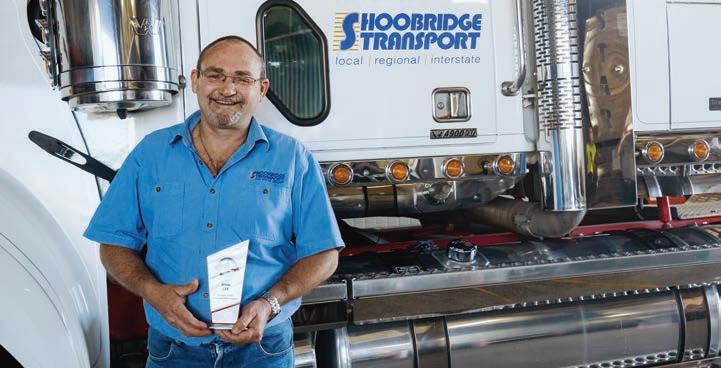
EXPANSION OF THE HINO NETWORK
Despite current economic conditions and COVID-19, an expansion of the Hino network has seen a strong second quarter for the newly-opened Ballarat branch of

Till Hino Dealer Principal, Brad Till. TECHNOLOGY
The recently announced Vehicle Safety and Environmental Technology Update Plan (SETUP) has outlined five work packages to give Australia’s heavy vehicle industry certainty when installing new safety technology. As part of the initiative he National Heavy Vehicle Regulator (NHVR) has released a blueprint to support manufacturers and operators to incorporate the latest safety technology into new and existing heavy vehicles.
The Plan is expected to help deliver commitment made as part of the National Road Safety Action Plan, including an increase in the deployment of Autonomous Emergency Braking (AEB), a better uptake of safer new and used vehicles and emerging vehicle technologies with high safety benefits and enable the introduction of safer, cleaner heavy freight vehicles by minimising regulatory barriers.
Based on consultation with several stakeholders, there are five work packages that will be progressed by the NHVR to increase/accelerate the uptake of vehicle safety and other technologies, with a focus on heavy freight vehicles.
One package will advocate for the
Till Hino in regional Victoria.
“As part of our constant appraisal of the Australian truck market, we identified an exciting opportunity to expand our dealership sales network into Ballarat, which is the third largest inland city in Australia, and located just over one hour north-west of Melbourne,” said Mr Bill Gillespie, General Manager of Brand and Franchise Development for Hino Australia. “Given their excellent results in the Geelong market, Till Hino was the obvious choice to lead that expansion.
“Since their purchase of the Geelong dealership in 2017, the team at Till Hino led by Dealer Principal Brad Till has continually delivered an excellent experience for their customers, the results of which were apparent with their recent success at the 2020 Hino Dealer of the Year awards with the Regional Sales Excellence title,” he continued.
Till Hino’s brand new purpose-built increased harmonisation of Australian vehicle standards to allow for the latest designs from origin markets and the fitment of safety and environmental technology from those major market designs.
A second package will relax access and use limits for vehicles fitted with the latest environmental and vehicle safety technology.
The third will ensure in-service requirements maximise the benefits of mandated technology.
The fourth will empower industry to make informed purchasing decisions and the fifth is intended to educate industry about vehicle safety and environmental technology.
“Heavy vehicle manufacturers are designing technology, both here locally and overseas, to improve safety and get drivers home safely,” said Scott Buchholz, Assistant Minister for Road Safety and Freight Transport. “This technology is available and I want to clear the way to encourage the use of that technology and make sure there are no regulatory barriers when it comes to manufacturers identifying and installing new systems. premises in Ballarat opened on March 2, 2020 with Rob Angus moving from the Geelong dealership in the General Manager role.
“To service the needs of our Ballarat customers, we launched an on-site service van there two years ago, opening a sales branch is a natural progression from this,” said Brad Till, Dealer Principal at Till Hino.
Till Hino has adapted to the challenges of COVID-19, they offer their customers contactless servicing and have increased their already high hygiene standards while ensuring a smooth sociallydistanced sales process.
“While there was an initial quiet period in early March, we increased our marketing efforts, which has resulted in the strongest ever sales month and second largest service month for our Geelong dealership,” said Brad. “Similarly, sales and service bookings have been
CERTAINTY WHEN INSTALLING NEW SAFETY
strong in Ballarat.”
“For example, lane departure warning, autonomous emergency braking systems and pedestrian and cyclist detection systems are all available, so let’s see them on more new vehicles.”
The NHVR’s Vehicle SETUP Plan was developed following a survey of manufacturers in 2018 and is designed to meet the targets set out in the Federal Government’s National Road Safety Action Plan 2018-2020.
NHVR CEO Sal Petroccitto said the plan would be delivered over five work packages, including better harmonisation of Australian vehicle standards, better access to the latest vehicle technologies, ensuring appropriate in-service requirements, and industry education about new and emerging technology.
“When we surveyed manufacturers, we saw that there was very little consistency when it comes to installing newer types of safety technology,” said Sal. “For example, stability control was included on 78 per cent of new vehicles, but fatigue monitoring systems were used on less than one in five, while lane keep assist featured on one in four new vehicles.”
ACTION ON OWNER DRIVER MENTAL HEALTH
An initiative has been announced to develop a program of action on owner driver health. OzHelp has received a grant under the National Heavy Vehicle Regulator (NHVR) Round 4 Heavy Vehicle Safety Initiative (HVSI).
The project will develop a Health, Wellness and Suicide Prevention Program for owner drivers in the transport industry across Australia. This project will be developed over a 19-month period and will undertake research to identify the unique risk factors affecting truck drivers in Australia and how to design and make accessible practical supports to help drivers.
Suicide is a major cause of injuryrelated mortality in Australia; each year, approximately 3000 persons die due to suicide. The burden of suicide in rural and regional areas of Australia far exceeds the burden in metropolitan areas, and past research has identified males involved in the transport industry as being at particularly high risk of poor physical health, poor mental health and suicide.
To reduce the occurrence of poor health and suicide among truck drivers, it is important to gain better understanding of individual, social, and environmental risk and protective factors that influence poor health and suicide in the transport industry.
Anyone aged 18 years or over is invited to participate in a working group to discuss the issues, barriers and potential solutions relating to poor physical health, poor mental health and suicide in the transport industry.
The working group members will be truck drivers, and discussions will be by phone. It is expected to take 20 to 30 minutes, during which participants will be asked to discuss their views about influences on physical health, mental health and suicide, how it

affects the truck drivers, barriers to accessing assistance, and looking for ways to ensure truck drivers at risk of developing poor health outcomes could be encouraged to seek help.

OUTSTANDING VALUE PER KILOMETRE
Toperformance Products Importer of KONI Shock Absorbers 8 Trade Place • Vermont VIC 3133 (W) toperformance.com.au @ToperformanceKoni @koni_australia




KONI FOR TRUCK & TRAILER
$8 MILLION FUNDING FOR IMPROVED TRUCK ACCESS
In a move which will see local councils carry out and manage engineering assessments of their bridges and culverts, the Strategic Local Government Asset Assessment Project will see up to $8 million funding for improved truck access. To begin with, the project will include 12 councils nationwide in its pilot phase.
The project aims to identify the existing capacity of road infrastructure and share this information centrally, to inform heavy vehicle road access. Under the Heavy Vehicle National Law (HVNL), road managers have responsibility for heavy vehicle access to their road network.
This project will provide the resources to assist local government road managers in making decisions relating to heavy vehicle access on their road network infrastructure, specifically bridges and culverts.
“We’re looking forward to kicking off this work in the coming weeks with a diverse group of councils from right across the country,” said Sal Petroccitto, National Heavy Vehicle Regulator CEO. “The project will improve heavy vehicle access by identifying key heavy vehicle routes on local roads and assisting local governments with the management of their road asset data.
“It will also provide a central database that contains information on road assets making it easier for heavy vehicle operators to use routes that can accommodate them. By working with local councils, we can simplify The Australian Taxation Office (ATO) says it wants to level the playing field for couriers and road freight businesses during these difficult times.
“We are working to stop businesses gaining an unfair advantage that makes it harder for those who are doing the right thing,” said Peter Holt, ATO Assistant Commissioner. “It is now more important than ever we create a fair and equal system for businesses in the courier and road freight sector and one way is through the Taxable payments reporting system (TPRS).”
In 2018, the TPRS was expanded to include businesses that pay contractors to provide courier and delivery services on their behalf. It further expanded in 2019 things, by improving the certainty of access for the wide range of vehicles that use our roads.”
The 12 local governments participating in the pilot are: • NSW – Bega Valley Shire Council, Cessnock
City Council, Muswellbrook Shire Council • Queensland – Central Highlands
Regional Council, Isaac Regional Council,
Mackay Regional Council, Toowoomba
Regional Council • South Australia – Barossa Council • Victoria – Glenelg Shire Council, City of Greater Dandenong, Pyrenees Shire Council • Western Australia – Town of Port Hedland
“Our members want to be able to operate high productivity freight vehicles such as B-doubles on key local government roads to boost their productivity,” said Ben Maguire, Australian Trucking Association CEO. “Allowing trucks that can carry more freight reduces the number of trucks on the road and improves safety for everyone.
“These trucks often need permits to operate over defined routes, but trucking businesses don’t have enough information to apply for routes that take their trucks over bridges and culverts that are established as being able to take their weight.
“The result can be long delays as trucking businesses, the NHVR and local governments look at different routes to try to find one that works. Potentially, local governments may need to undertake to include businesses that pay contractors to provide road freight services on their behalf. If a business pays contractors to provide courier or road freight services on its behalf, it need to record these payments (including cash payments) and check if it needs to lodge a Taxable payments annual report (TPAR) reporting these payments to the ATO.
This applies even if courier or road freight services are just a part of the business. The ATO uses this information to check that contractors are reporting all their income as part of a fair and transparent tax system.
“Many businesses are offering new or expanded services, including courier engineering assessments. This is expensive and adds even more delay. Sometimes, more than one trucking operator ends up paying for assessments of the same bridge.”
As a government partner, the NHVR works with over 400 road managers to obtain road manager decisions and provides a range of expert heavy vehicle resources to assist with the decision-making process.
This project will improve the available information about local government road assets, benefiting both road managers and heavy vehicle operators by: 1. Assisting local governments with engineering assessments of priority bridges and culverts, on key routes. 2. Supporting heavy vehicle operators by providing engineering assessments to

inform route planning. and delivery services in response to COVID-19 restrictions,” said Peter. “The information reported on the TPAR is used to make sure that contractors are reporting their correct income and paying the right amount of tax, so that honest businesses don’t lose out to those underdeclaring or not declaring income.”
Recording all payments made to contractors throughout the year will help businesses get it right and make it easier when the time comes to check if a business needs to lodge a TPAR. This information is usually on the invoices received from contractors and is the same information used to claim income tax deductions for the tax return and GST credits for the BAS.

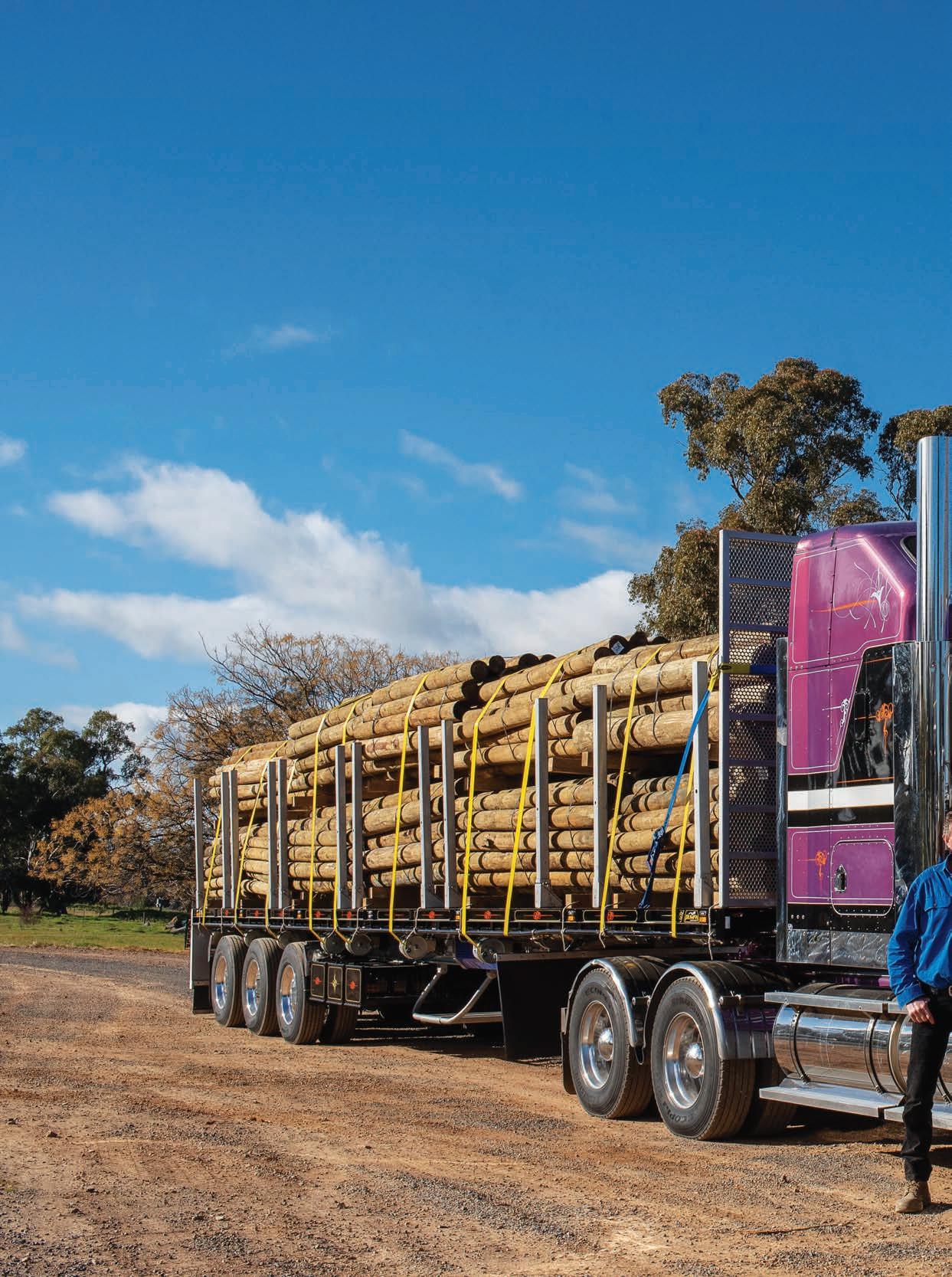
A TRICKY LOAD TO HANDLE AND SECURE
Based at Benalla in North-Eastern Victoria, Jamesy’s Transport is a two-truck operation that carts pine posts and concrete feeding troughs for farmers and rural supply stores, a tricky load to handle and secure. Paul Matthei caught up with company owner Andrew James who runs a tight ship, utilising the best in equipment to ensure the operation is as safe and efficient as possible.
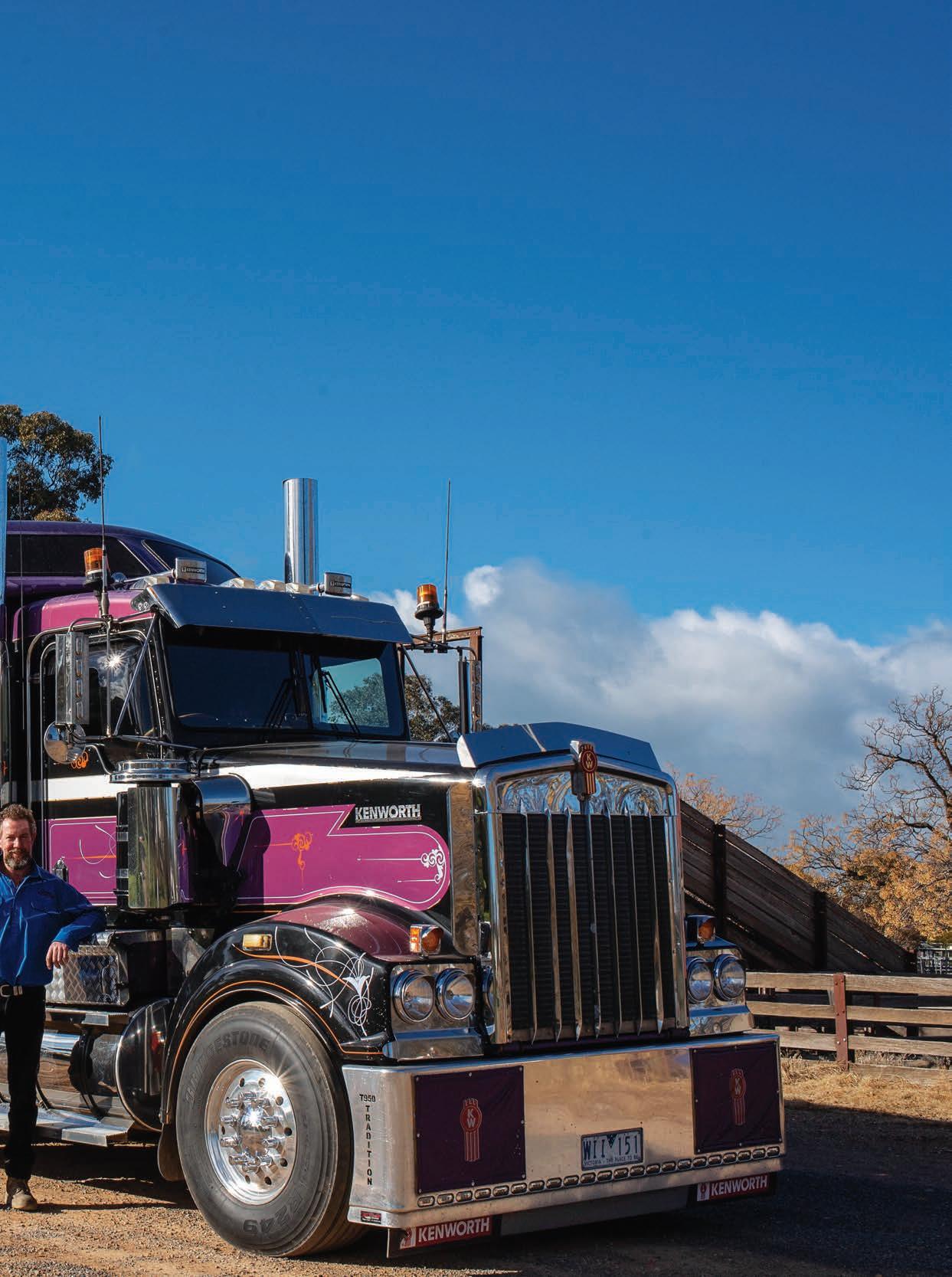

One of the distinct characteristics of ownerdrivers and small fleet operators is their ability to respond swiftly to changing conditions, be they market or equipmentbased changes, and modify their operations accordingly.
Unlike larger companies, which can, to a certain extent, ‘carry’ an underperforming area of the business temporarily, small fleets and one or twotruck operators need to be at the top of their game consistently. Their very survival depends upon it.
Andrew James is no stranger to operating trucks, having been an ownerdriver for 30 years and also having founded a company called North East Tilt Tray Hire about 20 years ago. The business boomed for a good few years with a national plant equipment hire company providing the bulk of the work, but that all changed virtually overnight, forcing Andrew to seek out other opportunities.
“We were running floats and heavy-duty tilt trays and all was going swimmingly until our major client closed down its Benalla branch and moved everything to its Shepparton and Albury branches which were already covered for transport, leaving us high and dry,” says Andrew.
The change of business name to Jamesy’s Transport and purchase of a flat-top trailer saw Andrew venture into subcontracting work for some of the larger transport companies for a number of years until he found his current niche.
For the past five years he has been hauling the pine posts which today make up about 90 per cent of his work, with the remaining 10 per cent comprising the transport of concrete farm feed and water troughs that are manufactured at Kerang.
“Even if we only carted the posts we couldn’t use a conventional log trailer because the bolsters are far too high and too far apart for what we do,” explains Andrew. “So we engaged a local engineer who installed pockets for the bolsters in the coaming on the original flat-top at every cross member as a trial to see how it would work – and it has worked quite well.”
While Andrew’s original flat top trailer has done sterling service in the dual-purpose role, his dream was to acquire a new flat-top trailer with easily removeable bolsters and auto tensioning straps to make the job safer and easier. Swan Hill-based specialty trailer builder Pumpa Manufacturing has recently made that dream of Andrew’s come true.
“What Pumpa came up with was superior to the original trailer,” says Andrew. “They took the ideas I gave them and massaged them to come up with this solution that has truly exceeded my expectations.”
POSTING A WINNER While to the uninitiated pine posts strapped into bundles might not seem too difficult to transport, Andrew says a number of factors conspire to make life difficult for the transporter, including settling of the load during transit, the deteriorating condition of country roads and the fact that the strapping holding the bundles together doesn’t always hold out until the destination is reached.
Andrew transports the loads of pine posts either double or triple stacked on the specially designed flat-top trailer, with the removable bolsters designed to contain the posts in the event of bundle strapping failure.
The new trailer also features pneumatic self-tensioning load binders that continually self-adjust during transit to ensure the correct strap tension is maintained as the load settles.
Andrew says the new trailer with the special load restraint features provides peace of mind during the trips which include hauling the raw posts from Mount Gambier to Benalla where they are treated before being transported to the end users including rural and farm supply stores.
“Above everything, it gives us the reassurance that while we are travelling nothing is going to move,” says Andrew. “These types of loads move all the time and the roads we travel on are getting rougher which means we need to have a system in place that ensures our loads are secure at all times. You’ve only got to hit a rough patch which makes the trailer wiggle its tail and the load will move.
“Also, the fact that we multi stack the
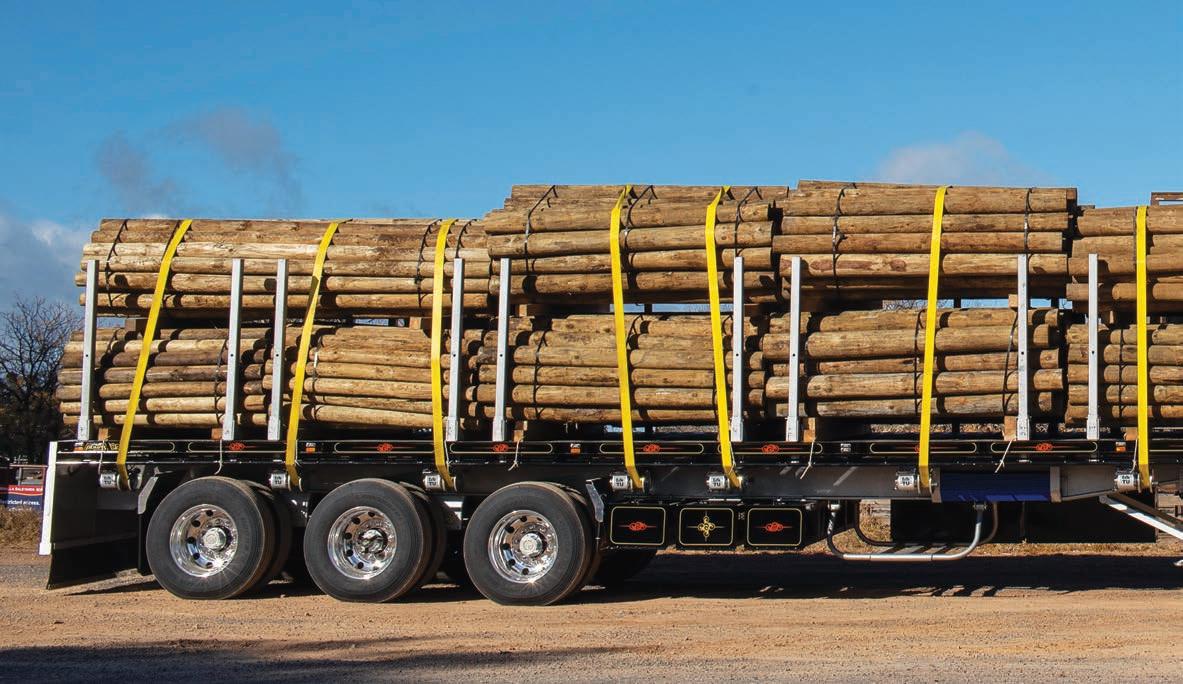
The new trailer also features pneumatic self-tensioning load binders that continually self-adjust during transit to ensure the correct strap tension is maintained as the load settles.

post packs amplifies the issue because the bottom bundles settle under the weight of the top ones allowing the straps to become loose.”
Andrew goes on to relate another factor that influences the ability to keep the bundles of raw posts securely restrained during the journey from Mount Gambier to Benalla.
“The raw pine posts I haul out of Mount Gambier are worse than the treated ones because they are bound up when they are moist and then they sit at the mill for a month or so until I pick them up, by which time they’ve dried out somewhat and the binding has slackened off a bit,” says Andrew. “Then, once they’ve been treated at Benalla, it swells them back up some. The point is that you can’t rely on the binding that holds the bundles together, meaning the bolsters and straps are of paramount importance for load security.”
It’s easy to appreciate Andrew’s enthusiasm for the pneumatic selftensioning straps on his new Pumpa trailer after he mentions that the conventional straps, due to the aforementioned vagaries of the operation, required him to stop at least every 100km for re-tensioning. The productivity saving from not having to do this is a no-brainer.
As for where he delivers the treated pine posts, Andrew says rural stores dotted throughout country Victoria and southern New South Wales take the lion’s share, along with a proportion delivered directly to end users.
“At the present time we have a lot going straight to vineyards in the Riverina region around Griffith where they use them for making grapevine trellises,” explains Andrew. “We deliver to rural stores in every town on the Murray between Benalla and Swan Hill, south to Bendigo and north through the Myrtleford region up to Albury.
“We also cover many other towns in central and northern Victoria including Euroa, Seymour, Lancefield, Mansfield, Alexandra, Yea and Coldstream.”
POLE POSITION Jamesy’s Transport runs two semi-trailers doing the post hauling work with the trailers also used to cart concrete troughs used for cattle feed and water.

Andrew James is no stranger to operating trucks, having been an owner-driver for 30 years.

“It’s more about service than anything else,” Andrew says, “I’ve been self-employed and buying transport equipment for 30 years and in that time I’ve always found overall service to be more important than purchase price.
“I expect long-term performance and durability from my equipment so for me quality is a big factor.”
This aspect of Andrew’s mindset is admirably demonstrated by the two prime movers he owns, a flash Kenworth T950 conventional powered by a Cummins N14 ‘Redhead’ and a Freightliner Argosy cab-over punched by a Detroit Diesel Series 60, with the extremely well presented 1997 model T950 serving as the flagship of the fleet.
“The T950 is an oldie but a goodie,” says Andrew. “The Argosy is a good truck too, being a cab-over it’s more manoeuvrable than the Kenny which means it’s better suited to some of the places we deliver to with tight access conditions.”
That said, Andrew says he is looking at upgrading the Argosy next year with its successor likely to be a Kenworth K200 cab-over.
“We hardly ever travel on freeways so we need trucks that can handle the rougher conditions we encounter on a daily basis,” he says.
At the end of the day, according to Andrew, having durable and reliable equipment that’s designed to suit his operation is the number one priority.
With the new custom-built Pumpa trailer and Kenworth T950 prime mover,
“They also fitted custom built locker boxes under the tray which conveniently hold the bolsters when we’re not carrying the posts.”
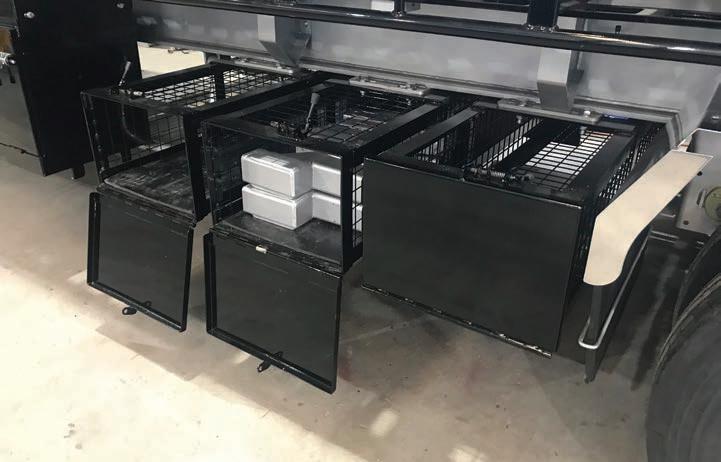
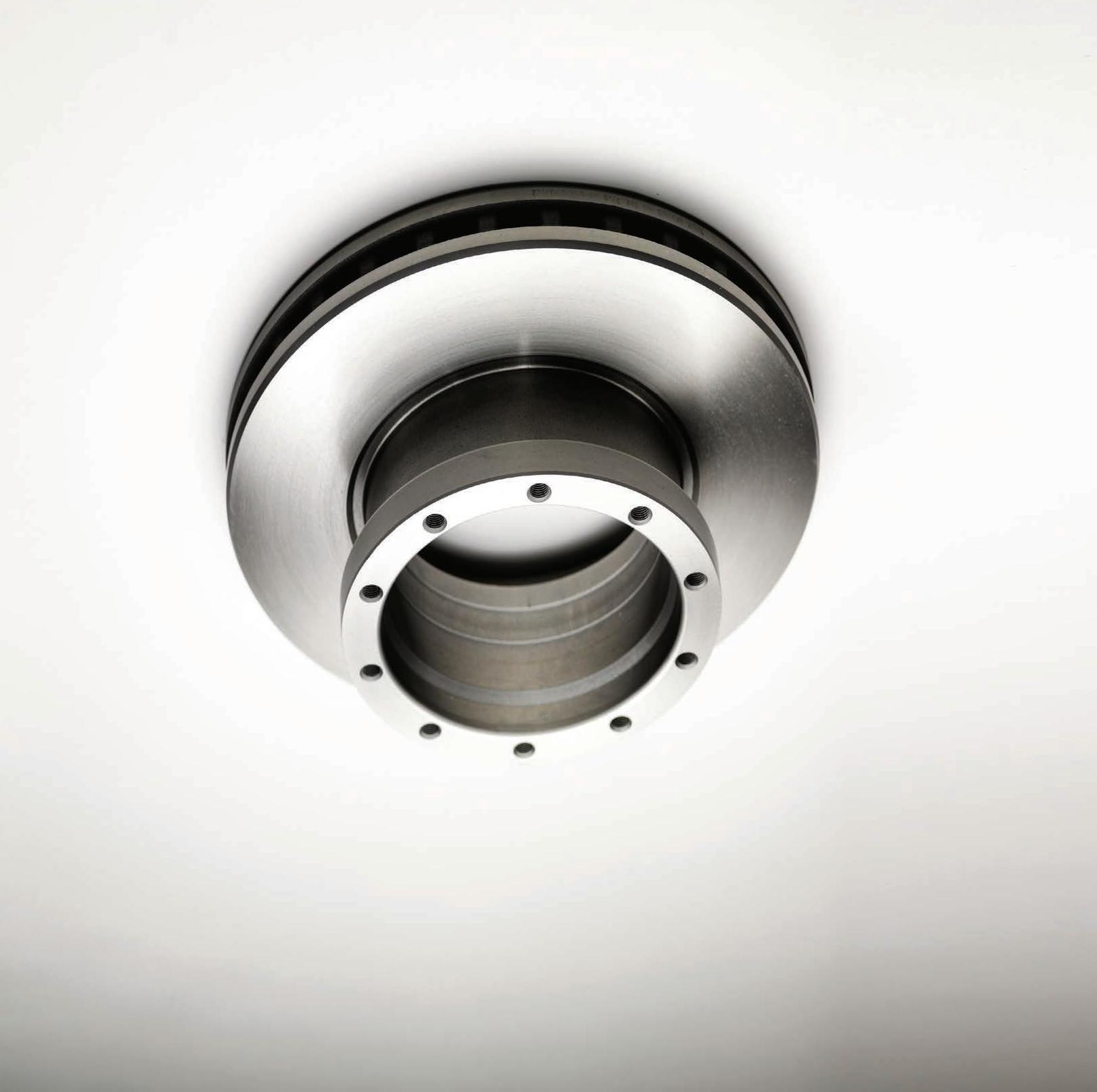

Andrew reckons Jamesy’s Transport is well equipped to manage the workload of treated pine posts one day and concrete troughs the next in the safest and most efficient manner possible.
Having had the original flat-top trailer modified with the addition of bolsters to suit the post work, Andrew says it was a very pleasant experience engaging Pumpa to design and build the new trailer from the ground up to ideally suit the multi-purpose role.
“I approached four of the larger trailer builders before talking with Pumpa,” says Andrew. “I spoke with Jason at Pumpa who was happy to work with me and ensure the trailer was built exactly how I wanted it.”
“After comparing a few brands we found there wasn’t much difference in the purchase prices, but being based at Swan Hill, which is one of our delivery destinations, Pumpa is ideally located if anything needs attention, which means a lot to us.
“Pumpa listened to what I wanted and came up with an even better design than I had initially envisaged, with the removable and adjustable bolsters spaced at intervals along each side to suit the length of the posts we carry.
“I went to Pumpa with the ideas and they modified them into what works even better, and I couldn’t be happier with the outcome,” he said. “They also fitted custom built locker boxes under the tray which conveniently hold the bolsters when we’re not carrying the posts.”
GETTING THE MIX RIGHT
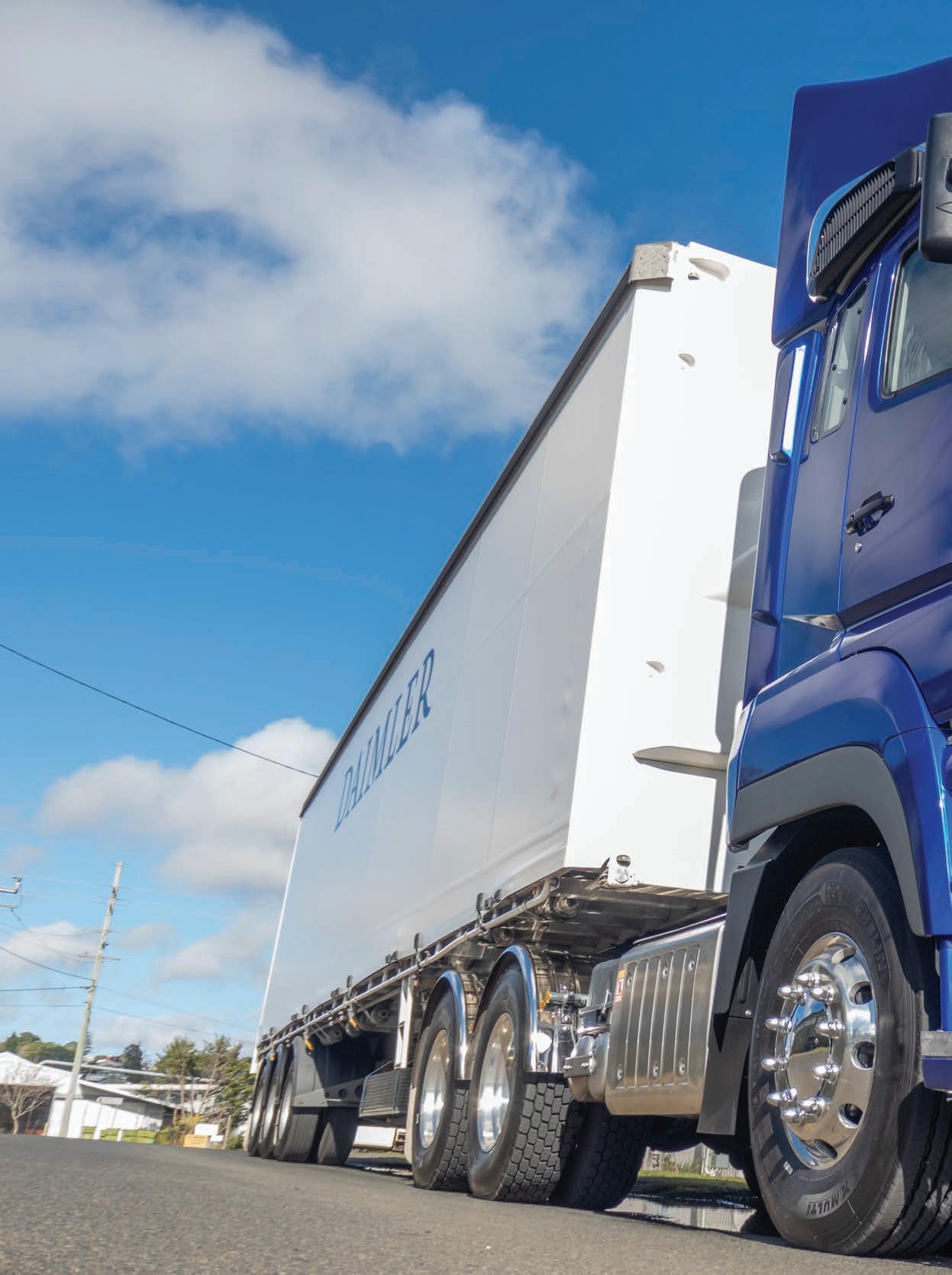
When European manufacturers work together with others, it seems they come to very similar conclusions about getting the mix right, especially when combining the best of Japan with the best of Europe. Tim Giles tests the new Fuso Shogun prime mover.

The Australian trucking public first got a glimpse of the Fuso Shogun at last year’s Brisbane Truck Show. It was a new name for a radically changed truck compared to its predecessors. This is the culmination of the full Daimlerisation of the Fuso offering in Australia.
Traditionally, the Japanese have not fared that well in the heavier end of the truck market, especially in the prime mover segment. The requirements of the Japanese domestic market tend to create a design which works well as a heavy rigid truck or a relatively light prime mover.
This works in Japan and sells well there, but Australians are looking for something designed to handle longer distances and ticking a few more of our boxes when it comes to sophistication.
Both the Daimler Trucks organisation and Volvo are involved with a Japanese truck maker. Daimler fully owns Fuso Trucks and Volvo is developing trucks for UD, even after recently selling the brand to Isuzu.
The two global giants seem to have come to very similar conclusions when integrating the Japanese heavy duty truck into a global truck maker and pulling componentry from all over the world. They have both decided Australian truck buyers are very happy with the basic chassis design of their Japanese heavy trucks, but are looking for more sophistication in the driveline and electronics involved.
An 11-litre engine based on a European original, coupled with a European AMT, seems to be the preferred option. Add to that all of the latest safety equipment and electronic control and monitoring found at the top end of the truck market.
For the Fuso Shogun this means the power comes from the Fuso OM470-T4 engine at 10.7 litres. This puts out 455hp (335kW) at 1600 rpm and has a torque rating of 2200Nm (1622 ft lb) at 1100rpm.
The OM470 is a tried and true engine out of the Mercedes Benz camp which has been used in many of the brand’s trucks in recent years. Another version of the engine is sold as the Detroit DD11 in the US market. It retains maximum power across a range from under 1500 to over 1800 rpm and the flat top of the torque curve extends for 1000rpm out to 1500rpm.
These figures tell us there is a great deal of flexibility in the performance of this engine. The fact that maximum power takes over just as maximum torque begins to fade and the rev levels increase means this truck is up to the job – even as a 11-litre tasked with doing a job previously handled by a 13-litre.
One of the contributing factors to enabling this set-up to handle the task at hand is the use of an excellent AMT. The transmission being used here is the Fuso Automated Manual G230-12, developed from the gearbox found in Mercedes Benz as the Powershift and as the Detroit DT12 in the Freightliner product.
The entertainment system is clearly ‘last generation’ following behind those offered in the latest trucks elsewhere in the Daimler stable.
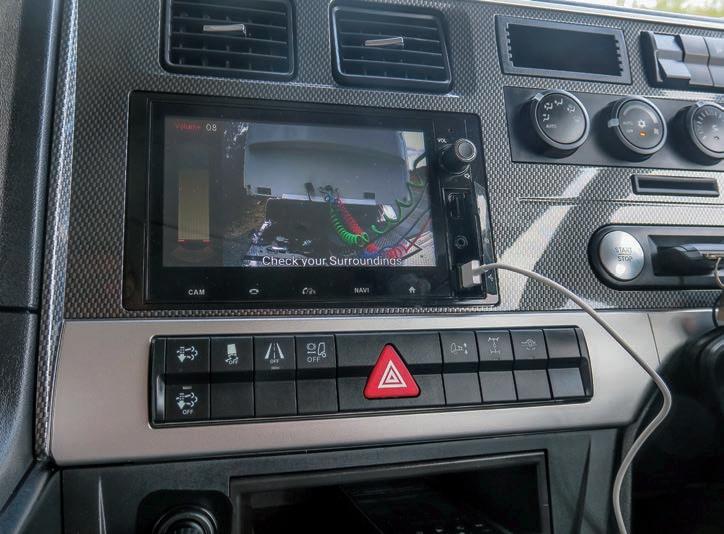

TRUCK ON TEST Pulling a loaded semi-trailer, Diesel took the new Fuso prime mover for a test drive around and down along the country roads of South East Queensland, climbing to some of the higher points of the Dividing Range around the Bunya Mountains, before following the course of the Brisbane River as it winds its way down Blackbutt and along through Esk, before meeting the urban sprawl of Brisbane around Ipswich. Then it was a quick run West to see how the driveline dealt with the long steady climb up the new Toowoomba Range Crossing.
The descent from Blackbutt showed the advantages of going with this European style driveline. The combination of a threelevel compression brake on the engine as well as the traditional Japanese engine brake meant it was possible to cruise comfortably down the grade with the transmission set to manual.
By changing down manually until the truck was comfortable, it was possible to descend without the feet on any pedals. On this particular grade, 1700rpm at 35km/h was a sweet spot, the driveline was taking the strain and the foot brake was in the back pocket for any unexpected events.
The last pull was up the new Toowoomba Bypass, built to replace the
punishing Toowoomba Range Crossing. This is a long, steady climb, with several changes in gradient. It is unremitting, but not steep enough to force the transmission to the lowest gear for climbing. This is the kind of climb where any weakness in torque or gear-changing is easy to detect.
As the truck got into the climb it settled down to 40km/h at 1500rpm in the ninth gear. It felt comfortable and well capable of handling the task with an even pull. We know this 11-litre is a torquey little engine in the same ball park as competitor EuroJapanese engines of the same size.
The model in this test uses a relatively short differential ratio at 4.625:1, and is set up for intrastate work at best. 100 km/h at over 1800rpm is not line haul specification. In fact, it is likely this truck will spend a lot of its life in metropolitan areas handling one or two trailers around the big city. This is the area of expertise to which it is suited and what it has been designed for.
Nevertheless, the new technologies now included in the package do have an effect on the functioning of the truck. Rolling down through the Brisbane Valley, there were many occasions where the eco-roll function in the Adaptive Cruise Control came into play effectively. On a couple of occasions, the tachometer needle sat at 500 rpm for several kilometres, with the AMT’s clutch held open.
The latest iteration of eco-roll appears to be a lot less conservative than the system when it first appeared on European trucks. Clearly, the data from millions of kilometres with the system has allowed it to learn, more precisely when it can and cannot disengage the driveline to save fuel.
Letting this smarter version of ecoroll do its job rolling in countryside like the Brisbane Valley shows its strength. This experience is not likely to happen very often, particularly with a driver on a deadline. But, by giving the system its head and refraining from touching anything but the steering wheel, it is possible to get kilometre after kilometre of low fuel-use rolling.
The downwards side of an incline built up enough speed to get the truck up the other side without triggering the system to take over and get back up to speed. Admittedly, this did mean the truck was sometimes only doing 60 or so at the top of the rise, but it would repeat this pattern until the uphill sections got too steep for the rolling to continue. Then the cruise control kicked back in and we were on our merry way again. Quite a bit of fuel saved there.
RIDING SHOGUN From first sight the Shogun looks different enough from its predecessors, but not too dissimilar. The aerodynamic engineers have been busy ironing out the imperfections and improving air flow with subtle changes to the shape. The truck’s new impression is aided by the use of a sharp blue paint job, a change from the usual white Japanese prime mover. This look is a vast improvement on the red and black camo look used on the first evaluation truck in 2019.
Looking around inside the cabin, the layout is very familiar. Fuso has always

gone with a flat set of lockers and pockets across the top of the engine cover. There are places to put odds and ends and others to store more substantial items. There’s a tray which fits a work diary and another where pens, phones, etc. can live. The provision of round drink holders seems to be lacking, but there are some square ones which should fit the bill.
The entertainment system is clearly ‘last generation’ following behind those offered in the latest trucks elsewhere in the Daimler stable. The information screen directly in front of the driver is relatively small, but reassuringly comprehensive. This is the window into the inner workings of the substantial computing included in the Shogun. A short test drive just isn’t long enough to investigate its options fully.
On the road, steering is positive and, from the point of view of the driver, this truck has a firm ride, something common across the spectrum of Japanese heavy trucks, when compared to the longdistance highway prime movers with a European background.
This firmness can be somewhat overcome by increasing the softness setting on the air suspended seat. The driver deals with the firmer feel by adjusting the seat to take out the worst of the bumps. This adjustment is not too responsive and the driver ends up with the choice of quite firm or quite soft, with not much in between.
The items that any driver will notice in the new truck, which make their life easier, are those aspects imported from the Benz product. There is a very modern steering wheel with all of the control buttons close to the driver’s thumbs.
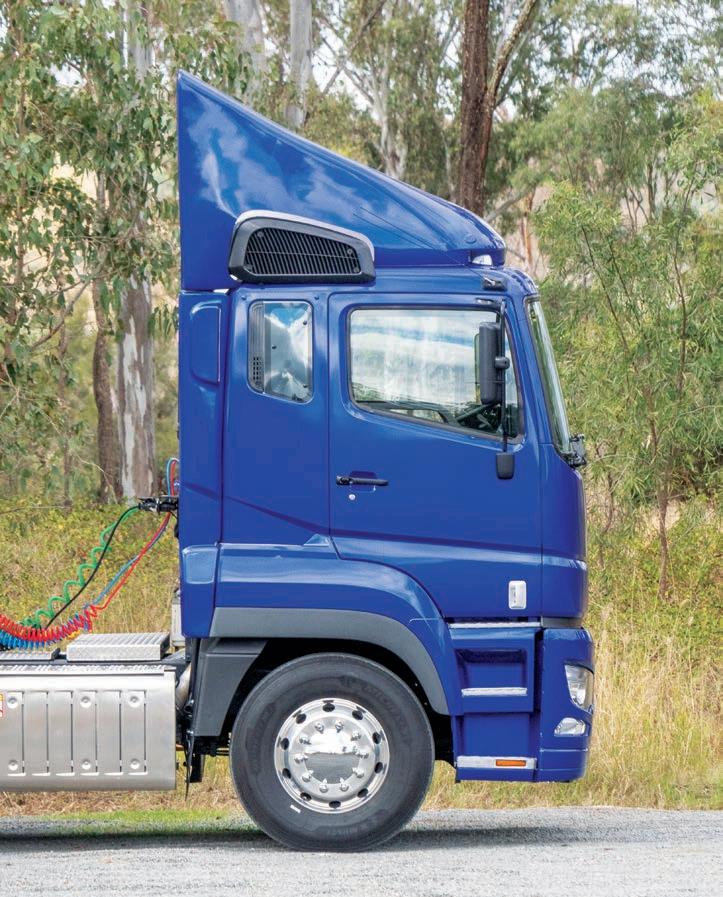
The layout is now common across Daimler. The entertainment system and phone controls sit on the left, while the right has the cruise control suite’s buttons. This is becoming a layout in most new trucks coming into this part of the market
New trucks are almost all being offered with close to the full suite of bells and whistles, ABS and EBS of course, but also Advanced Emergency Braking (AEBS) and Adaptive Cruise Control (ACC). There’s also Active Attention Assist with the system monitoring driver input on the wheel or pedals to look for any fatigue-like symptoms. There is Electronic Stability Program (ESP) as standard and Lane Departure Warning System (LDWS) as well.
Of course, in a test situation like this, it is difficult to gauge the effect of these technologies’ inclusion, but as these systems become more commonplace and, increasingly, fitted as standard, the industry will become even more familiar with them. The point at which there is no need to mention their inclusion may be closer than we think. It is not necessary to include the fact the braking system uses full air, dual circuit with Fuso taper rollers. Perhaps the inclusion of AEB, ESP and LDWS will also not need to be remarked upon in the not too distant future.
In fact, this is a typical Japanese heavy. The difference, this time around, are all of those aspects of design and build introduced from the Daimler Group. The same could be said of those trucks built in Japan from the Volvo world, and the other two main Japanese truck makers are going through the process of introducing these more ‘European’ aspects of truck design, especially at the heavier end of the market.
With the introduction of these different influences in truck design, we are heading to a position where the technology in trucks is converging. The distinction between a US, European and Japanese truck in terms of the systems on offer is becoming less and less visible. Truck design is becoming more homogeneous and the global differences less distinct.
The trick here is not the technologies themselves, but the way they are put together, the way they are integrated into the overall truck system. As most of these modern heavy trucks come with a lot of the available bells and whistles, it is often in the driver interface where the cultural differences between Japan, Europe and the US can be found.
The way these systems connect with the driver tend to be least sophisticated in the Japanese product. This is understandable since the way trucks are designed and built for their domestic market is as a commodity and a functional tool in a business.
This is precisely how this new Shogun appears: As a useful functional tool in a business and not as a truck which is going to get any prospective driver excited about spending their working life behind the wheel.
At the end of the day, the Fuso designers have brought a ll of the goodies the latest electronics and safety technologies can bring to a truck, without losing the typical solid feel of a heavy duty Japanese truck. A utilitarian truck has been developed to include all that the modern truck designer wants to add to the mix.










